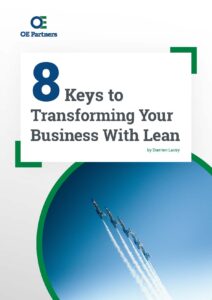Given the tectonic shifts that have rocked the business landscape in recent years, business transformation is rightly a hot topic. While some new business models continue to amass huge wealth, more traditional businesses have seen growth rates either stall, slow down, or fall off a cliff.
In recent months, the outbreak of Covid-19 has thrown the need for change into sharp focus. So, with a global pandemic complicating a landscape already rocked by advances in robotics, AI, big data and the Internet of Things, how can businesses begin to understand the change process. And how it can be managed best.
The first step is to define the term business transformation and, in doing so, map out the different ways it can be achieved.
Writing in the Harvard Business Review Scott D. Anthony defines three approaches to business transformation. Understanding which one best fits your business will set you on a path to successful transformation.
1. Operational business transformation
Perhaps the most common approach to business transformation, operational transformation involves doing what you are doing now, but doing it better.
In the sporting world this is referred to as the pursuit of ‘marginal gains.’ The thinking here is that every improvement, no matter how small, adds up what is (hopefully) a winning edge.
In the business world, this means finding efficiencies and cost-savings. Multinationals such as Proctor & Gamble and Toyota are masters of this approach and transform their operations on a regular basis. This is reflected in profit margins that often dwarf those of their competitors.
2. Transformative operating model
This approach involves producing or providing a product or service in a fundamentally different way. A good example of a business successfully implementing the transformative operating model is Netflix. The company started out offering DVD rental by mail, but in 2007 introduced a streaming service. The rest, as they say, is history. Today Netflix has over 182 million paid subscribers worldwide and even produces some of its own content.
3. Strategic business transformation
The final type of transformation is strategic. This involves a fundamental change in the product or service a business provides.
In 1902 the Minnesota Mining and Manufacturing Company started out as a mining company, which also sold a mineral to grinding wheel manufacturers. Fast forward to the present and the company has shortened its name to 3M but has extended its range to include some 55,000 different products ranging from abrasives to consumer-electronics components.
Business transformation: In summary
Of the three types of business transformation explained above, strategic transformation presents the most risk, but also the most reward.
Currently Google is putting its immense wealth, technical knowledge and access to big data and free marketing channels to use in entering a variety of new areas, from smart home tech to self-driving cars.
The transformative operating model can also provide significant financial rewards. However, this model is not suitable for many businesses as it usually requires a new and better way of carrying out core business activities.
So, with this in mind, the most common form of business transformation remains operational transformation. This is accessible and affordable for all businesses regardless of size or operating budget.
Are you ready to explore transforming your business? Why not give us a call and find out how we can help.
Looking to accelerate your business transformation journey?
Then get in touch to book a 20 min Discovery Chat and we'll talk through what things can be done to deliver results faster.


